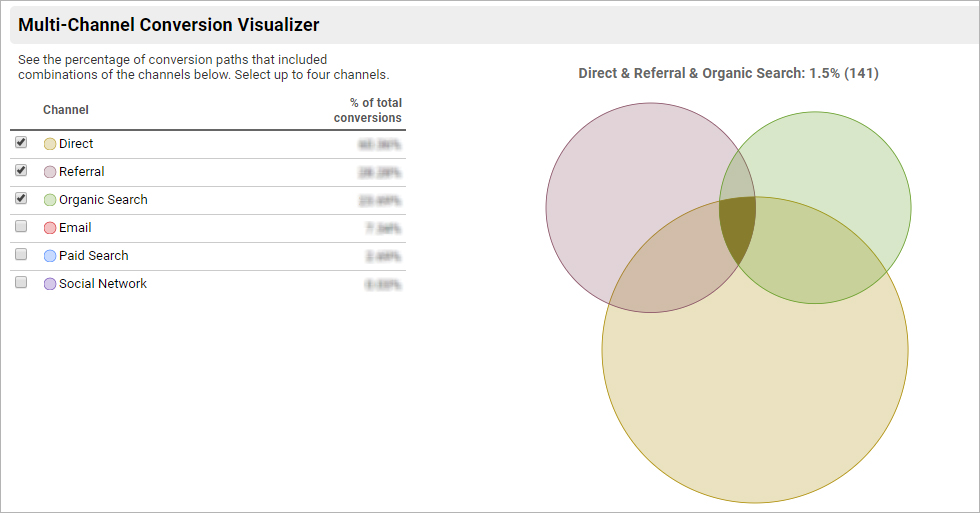Avoid These Cross-Channel Marketing Mistakes
Let's go through some common cross-channel marketing mistakes to avoid in order to get the most out of it.

Some people may be intimidated by the term “cross-channel marketing,” but the notion is actually fairly straightforward. While multi-channel marketing employs several channels to reach your audience, cross-channel marketing uses those numerous channels to deliver a more linked experience for your audience. As a result, even if consumers switch between channels, they’re still on the same customer journey.
Cross-channel marketing has numerous advantages, including more engagement, better insights, and a stronger brand, but only if done correctly. Let’s go through some common cross-channel marketing mistakes to avoid in order to get the most out of it.
1. Inconsistent Brand Message
It’s critical to keep your messaging consistent whether someone is searching for you on Google or Bing, seeing you as they read through their Facebook or Instagram feeds, or following up on industry news on LinkedIn and Twitter.
You should adjust your ad copy for each platform, the audience you’re targeting, and their buyer journey stage.
Always follow consistency because different messages on different platforms can confuse your target audience and make your brand look less reliable. You can try the different formats to deliver your message on various platforms, but the brand message should be universal.
2. Same Strategy on All Platforms
You know that when you’re on Instagram, you’re in a different mentality than when you’re on LinkedIn or searching on Google. Your target demographic is no exception. If an offer performs well on Google but not on Facebook, it’s possible that the issue isn’t with your Facebook ad text or creative, but with the offer itself.
Accept it if you can receive bottom-funnel conversions from Google but not from Facebook. So, for what purposes can you use Facebook? Perhaps a lead generation form or a telephone call. Moreover, you can use it to grow an audience and raise brand awareness.
Pay attention to what your audience wants to do on each channel, rather than what you want them to do, and modify your ads and strategy for each platform.
3. Fixing The Budget
Most people fix a budget for their numerous channels and stick to it. It’s wonderful to be organized, but one channel can severely under or over-perform its historical average in any given month. You’re missing out if you’re not adapting and taking advantage of these trends.
Let’s say you have a $50,000 budget and want to run advertisements on Google, Facebook, and Twitter, with possible ranges for where you should start. However, as the month progresses, it’s in your best interest to keep track of how each channel is performing in comparison to its average, as well as how efficiently they’re generating value in comparison to one another.
You may if you need to move $10,000 to Twitter. If you need to take a complete break from one channel, do so. You should begin with a strategy and modify it according to the performance of your channels. Sticking to a fixed budget can be counterproductive and can keep you from having potential results.
4. Same KPIs for All Channels
Each channel in a cross-channel advertising plan should have its own goals and KPIs. Facebook’s CTR will be different from LinkedIn’s. None of them will come close to Twitter.
The same can be stated for your cost/conversion targets. You can have a lower acceptable CPA on Facebook if you know leads on Facebook are of lower quality than leads on LinkedIn. On the other hand, you may argue that LinkedIn leads are so good that you’re ready to spend twice as much for them as the average account. It’s the same with ROAS and lifetime value.
Make sure you understand not only the current performance goals for each channel but also the entire value generated by each channel and decide KPIs accordingly. With the right KPIs, you’ll be able to correctly track your marketing efforts across channels and generate potential results.
5. Incorrect Retargeting Audience
You can develop retargeting audiences on practically every online marketing channel where you may target users. These will vary by platform, but you should be able to cover the same ground.
If you’re utilizing retargeting audiences to target prior website visitors who haven’t made a purchase on one platform, you should do so on all of them.
More significantly, if you’re excluding users from a campaign on one platform, you should do it across the board. This link will take you to the ad messaging section. Users may become perplexed if they receive communications on some platforms but not others due to their exclusion. You’re also wasting money on users who aren’t supposed to be in those audiences.
So, it’s necessary that you choose your retargeting audience correctly.
6. Avoiding Non-Performing Channels
While we always want all channels to conduct direct conversions, it’s not viable. In the majority of circumstances, numerous channels are involved in the process of conversion of the user, where Cross Channel Marketing comes in handy. The Assisted Conversions Report allows you to see how many conversions contributed to each channel or campaign.
You can consider the Multi-Channel Funnel and Top Conversion Path report to get the source, medium, campaign, and users flow.
So, analyze all your channels, and see if you are not wasting your resources on any non-converter medium. Once you have medium, see if you lack the right strategy, or if the platform is just not suitable for your business. Based on the previous step, ditch a platform or hone your strategy to have fruitful results from your cross-channel marketing.
7. Lacking At Tracking
Every platform has its own tracking feature, which is fantastic. The bad news is that each platform will almost always claim more credit than it deserves. This is partly due to a lack of technology to cross-check other platforms, not (primarily) because they’re trying to demonstrate their worth.
And, just to be clear, no platform will ever do this because it isn’t in their best interests.
As a result, having a third-party source of truth for your cross-channel marketing is crucial. Google Analytics is the most popular and certainly the simplest option. Despite the fact that it is created by Google, it does not place its ad platform above any other when it comes to tracking in analytics.

Source
Every Google Analytics goal will be assigned using the last non-direct click model. That is, whichever channel contributed the click prior to the conversion will be credited with the conversion.
Don’t skimp on the tracking setup when putting your cross-channel tactics in place. To make informed optimization decisions, make sure all of your channels are tracked consistently in your single source of truth.
8. Improper Content Customization
While a cross-channel marketing campaign requires consistency, the content you employ must be appropriate for each channel. Only when you’ve tailored the material to each channel will you be able to tap into its full potential for interaction.
If you use white paper in an email campaign, you should not use it on your website in the same style. Such a blunder will result in a consistently underperforming CCM strategy.
Conclusion:
Cross-channel marketing is an effective way of rounding up your customers and nurturing them from all possible mediums to roll in conversions. This marketing strategy boosts the conversion rates and your business growth if done right! So, avoid the aforementioned multi-channel marketing mistakes, and enjoy excellent results.
If all this is overwhelming for you, you can hire a PPC ads management agency to handle your cross-channel advertising and deliver efficient, profitable results.
The choice is yours!
Chop chop!
Read More: A complete guide to creating effective digital marketing strategies




